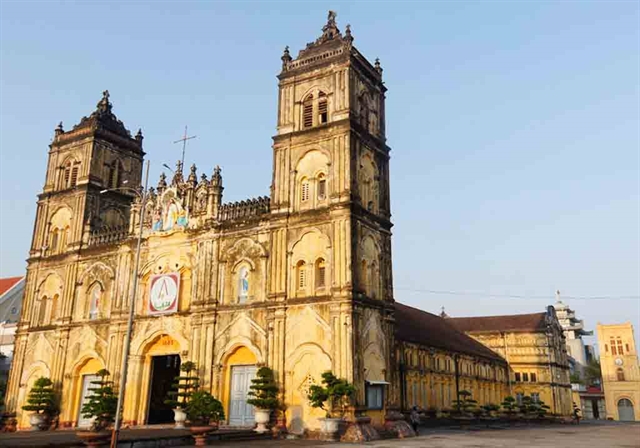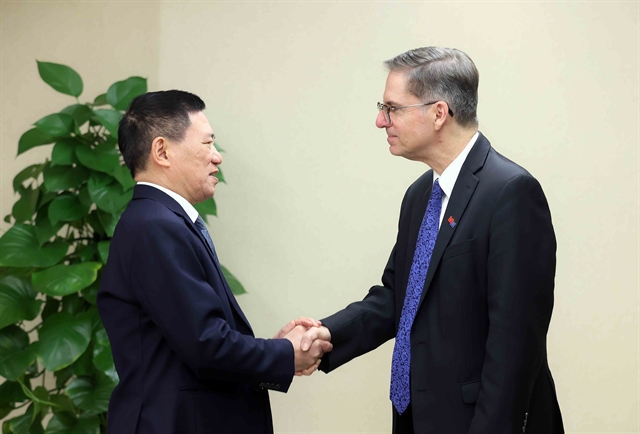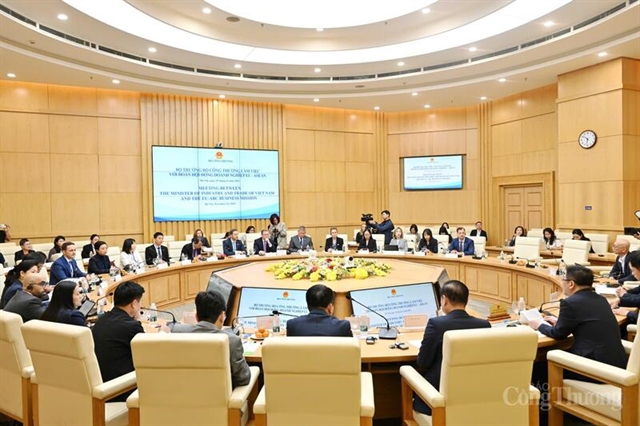 Life & Style
Life & Style


|
HÀ NỘI – A group of architects and cultural experts have signed a petition sent to the Prime Minister, the Minister of Culture, Sports and Tourism and chairman of Nam Định Province’s People’s Committee to stop the renovation of Bùi Chu Church.
In the letter, the architects said that after a two-day examination of the church, they found only minor damage caused by rain and damp.
“The church’s load-bearing frame is still in good condition, and would be fine as long as it is reinforced,” they said. “The walls are covered in moss but that would be simple to treat.”
Priest Vũ Đình Hiệu announced Bùi Chu Church would undergo repairs from May 13 this year.
However, having read the plan approved by church authorities, the architects found the task would involve destroying the whole building and rebuilding it in a different shape and size, with a new wooden frame and pillars.
“We don’t know why the church has not been recognised as a national relic site,” they wrote. “Based on Việt Nam’s regulations of classifying relics, the church meets the criteria of a national heritage site.
“According to the International Culture Heritage Conventions that Việt Nam has joined we ask the Prime Minister to halt the destruction of the site and wait for a comprehensive examination by the National Heritage Council, which will suggest proper upgrades following the Cultural Heritage Law,” the letter said.
The architects also asked the Ministry of Culture, Sports and Tourism to list the church as a heritage site.
They also asked the PM to order Nam Định’s authorities to postpone the project.
Earlier this month, Vietnamese ambassador to Cambodia Vũ Quang Minh shared information on his personal Facebook page that the local Christian community had decided to knock down the most magnificent church in Nam Định, with plans to build a new church in the area.
Martin Rama, senior advisor to the World Bank and Project Director of the Sustainable Urban Development Centre under the Vietnam Academy of Social Sciences, wrote a letter to Bùi Chu Church which has been published by various local newspapers.
The letter states that churches and mosques built in Việt Nam under French colonial rule are precious heritages.
"These buildings and their interior decor are architectural gems thanks to the combination of the beaux arts and traditional Vietnamese aesthetics. The destruction of these objects is a loss to humanity," wrote Rama.
The expert also said he believed such buildings deserved to be recognised as World Heritage Sites by UNESCO.
If they are properly protected and renovated, they will become attractive tourist destinations and bring more revenue to the local community.
However, there are only a few churches, such as the Church of Phát Diệm in Ninh Bình, the Church of Notre Dame in Hồ Chí Minh City, St Joseph’s Cathedral and Cửa Bắc Church in Hà Nội protected by the Cultural Heritage Law.
According to the Cultural Heritage Law, if a site is not listed as a national relic site, it is not protected by the law, which means renovation and building new churches can be decided by parishioners and the Christian community.
Bùi Chu Church was built in the late 19th century by Spanish Bishop Wenceslao Onate Thuận (1884). The church was inaugurated in 1885.
Đặng Ngọc Cường, chairman of Xuân Trường District’s People’s Committee, told Tuổi Trẻ online that carpenters had been working for the last few nights.
Cường said local priests had applied for construction permission in 2016, but did not start preparing for construction until 2018.
“The church has been downgraded for many years,” he said. “The roof has almost collapsed while cracks have appeared on the walls and the wooden pillars are rotten. The priests have followed proper procedures. Hundreds of priests discussed the issue and decided on it a few years ago. It’s not a sudden decision.”
Trịnh Văn Quyền, a 60-something from the area, told Việt Nam News that he had a lot of childhood memories of the old church.
"It's too old like me," he said. "The roof is saturated, and every time it rains hard it leaks, and the wooden pillars are rotten.
"It may put lives at risk, so I think we need a bigger space for people to pray and for community activities. I strongly support the idea of rebuilding the church. We've even contributed money and asked our children and grandchildren to volunteer to work for the rebuilding process," he said.
Mai Kim Hương, a young student in the district, said she regretted losing the old building.
"I think it's more ideal to find some way to renovate the old building rather than pulling it down and building a completely new one," she said.
Architect Cao Thành Nghiệp, director of the Managing Board for Renovating HCM City’s People’s Court, said the church was as old as the HCM City’s People's Court, which has great value in terms of architecture, society, building techniques and history of urban development.
“The church’s arches are unique and can’t be seen in any other church in Việt Nam,” he said.
“Its ceiling is made mainly by local materials including a mixture of lime and straw, which creates curves suitable to weather in the north.”
He said the church was built by bricks and iron wood pillars, which are placed on stone basements with delicate carvings.
Bùi Chu Diocese was the first diocese recognised in Việt Nam in 1533. VNS




